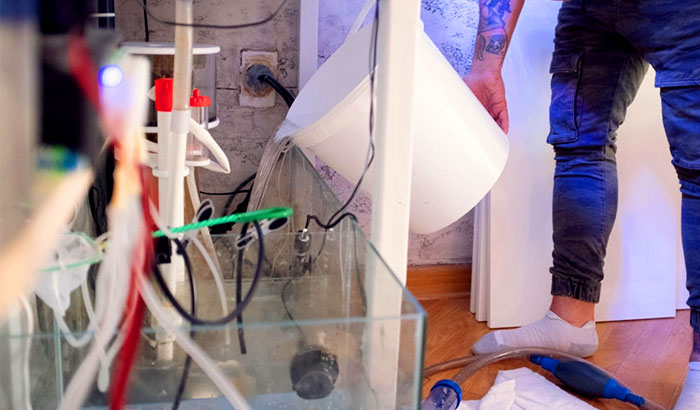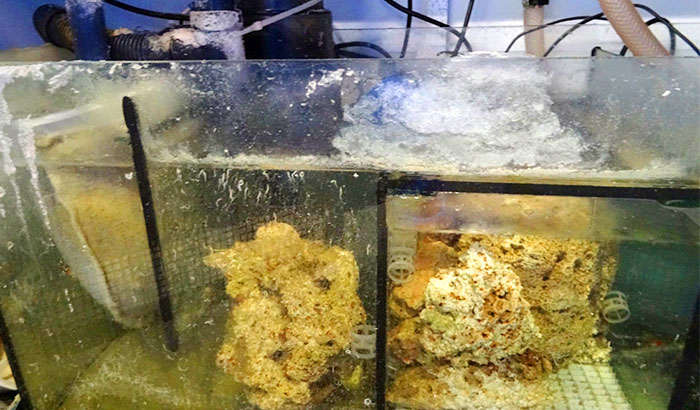If you are an owner, you should know the importance of the sump tank in your aquarium in terms of giving balance and flow to the water volume of the fish tank. The only issue with this part of the aquarium is the sump pump, which produces a loud sound. Do you know how to make a sump pump quieter? If not, read this article below and be informed.
Step 1: Identification of Where the Sound is Coming
The initial thing to do is find where the sound is coming from. Many parts of the sump pump may produce sounds. If you can determine where the sound is coming from, it will allow you to plan on the next course of action.
There are many reasons why the sump pump starts to produce a loud sound. It can be that the sump is too old and replacement is needed because of too much wear and tear. Or the pump is installed correctly, causing some parts to produce unnecessary sounds.
Whatever the reason, it is essential to find the source of the sound so that you will know what to do to minimize or eliminate it.
Step 2: Reduce Water Flow
The sump of your aquarium involves moving water, solid objects, and air which cause to produce a sound. If there is a lot of moving water coming in and outside your aquarium, it will produce a loud sound coming from the sump filtration system.
You cannot completely eliminate the sound, but you can make it quieter and make the sound minimal. Remember that the greater the flow, the more sound the aquarium water will produce.
One way to quiet the sump pump is to reduce the water flow. If you decrease the turnover rate of the aquarium, it will not hurt the filtration system at all. It is very common to get confused with the filtration flow rate with the current and turbulence in the aquarium.
Step 3: Make the Water Move Faster
Increasing the water movement inside the tank is another way to make a sump pump quieter. This situation can be done by using a circulation or wavemaker pump that is totally underwater to make the sump pump quieter.
Step 4: Check on the Plumbing
The trickle and splash noise you hear from the sump pump system usually comes from water heating surfaces. This situation usually happens when there is any bend or turn in the plumbing or where the water flows to the air to hit a liquid or solid surface.
You will need to keep the pipes and hoses as straight as possible to reduce these sounds. If you must do a 90-degree angle, use a sweep elbow and not a normal elbow. There is a difference since the sweep elbow is more rounded on the side and will be a lot quieter.
Step 5: Reducing the Distance where the Water Falls
Another way to make the sump pump quieter is by reducing the waterfalls’ distance before hitting a surface. You can actually use a material like a loose reticulating foam to break up the water while absorbing the sound. Doing this action will minimize the sound of the sump pump.
Step 6: Reduce Gurgling
A gurgle is caused by air being sucked into the drain hoses. There will be no gargling if the air is prevented from being sucked in the drain hose. There is an H20 Refill System that usually comes with a silencing kit that can eliminate gargle.
The H20 stock box external overflow will also eliminate gurgle noise when being a plumber with a dorso and other silencing systems.
Contents
How to Make Air Pump Quieter
An air pump in your aquarium also comes with that annoying noise that can create discomfort for the aquarium owner. If you are using an air pump, there are also things that you can do to make it quieter. Please read our step-by-step process below:
Step 1: Putting in a Soft Cushion
A block of foam or a folded towel can be used to cushion your air pump. This type of material will help reduce vibrating sound because of its softness and density. A thick towel or foam should be enough to reduce the sound.
Step 2: Putting the Pump on a Solid Surface
Putting the air pump on a solid surface will prevent it from moving around, preventing unnecessary sounds from happening. A good example is putting the air pump on a solid stone counter completely eliminates the vibration sound.
Step 3: Reducing Any Resistance to the Pump
If you can lessen any resistance that the pump is experiencing, you can probably minimize the sound it is creating. You can reduce the airline tubing from the air pump to where the device is running in your aquarium.
You can also check on the device such as airstone or ornaments where the air pump is connected because it may have gotten clogged up with debris, algae, and gunk over time.
Step 4: Hanging it through the Power Cord
If your air pump is very small and light, you can easily hang the air pump to prevent any vibration against anything on a surface. Doing this action will prevent any vibrating sound from happening.
Step 5: Completely Change the Air Pump to a Much Quieter One
Last but definitely not least, completely changing the air pump to a smaller and quieter one is an option if you have the budget. There are so many options available such as the USB nano air pump, which is very small and light. It is also very quiet and works without unnecessary sounds.
Conclusion
If you want to know how to make a sump pump quieter, we have presented several steps to do it. It is all about finding the source of the sound and finding ways to make your sump pumps quieter. No sump pump will be completely silent, but with some troubleshooting, the noisy sump can be adjusted to be a pleasing and quiet trickle that enhances the overall enjoyment of the aquarium.


